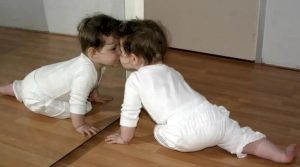
Have you ever tried to hold the baby in front of the mirror and see how the baby reacts?
Most babies over two months will find the mirror to be a very interesting and playful thing. They will smile at the person in the mirror or at themselves, yell out and even chuckle!
But why do babies react like this? Do they know they are in the mirror?
Babies’ smiles are just social smiles
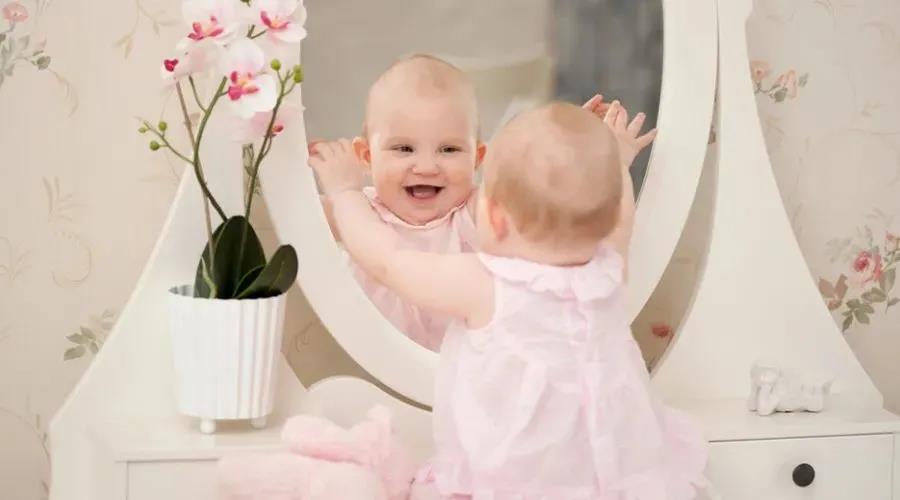
When the baby looks in the mirror, does he know that the one in the mirror is himself? In fact, as early as 1972, psychologists became interested in this issue.
But because babies can’t communicate in words yet, psychologists can’t directly ask “What did you see?” Babies can’t answer, what can I do?
When psychologists all challenged it, the psychologist Amsterdam thought of using an experiment previously used on animals: the “rouge test” (this experiment is also called the “mirror self-recognition test” )”).
After all, in theory, if we suddenly find something dirty on our face while looking in the mirror, we will find a way to wipe it clean.
Therefore, Amsterdam believes that if the baby knows that he is in the mirror and sees dirt on his face when he looks in the mirror, he should touch his face with his hands instead of the face in the mirror.
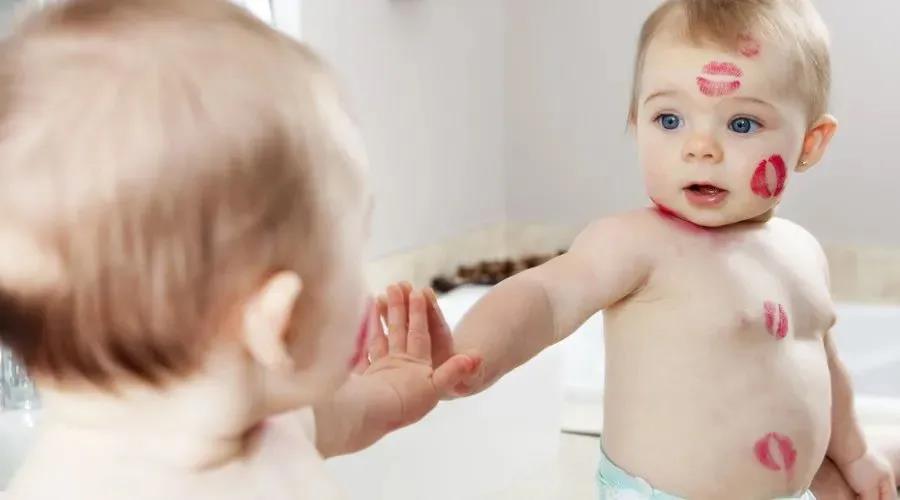
Based on this idea, Amtersdam called 88 healthy babies between 3 and 24 months old and asked their mothers to apply a little red rouge on one side of the baby’s nose without the baby even noticing it.
Subsequently, the mother will hold the baby in front of the mirror and let the baby pay attention to the picture in the mirror. Amtestein began to record the reactions of the babies at this time.
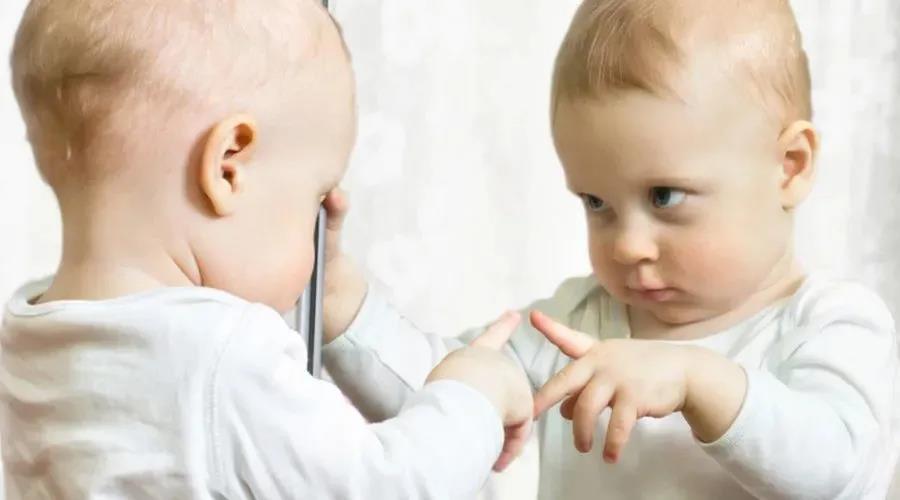
As a result, he found that babies 12 months ago had no reaction to the red rouge on their noses! These babies only laugh at the mirror or make happy sounds. Few of them will kiss or touch the mirror, but none of them will actively touch their face.
These performances, in fact, are just like the smiles of anyone you see, they are just social behaviors. These babies probably think that there is another baby playing with them in the mirror!
Amtestein also found that children can really accurately touch the rouge on their faces instead of touching the reflections in the mirror. It started around 24 months. Therefore, he believes that it may be from the age of 2 that children can really know that they are in the mirror.
This research is very interesting
But is there any practical significance?
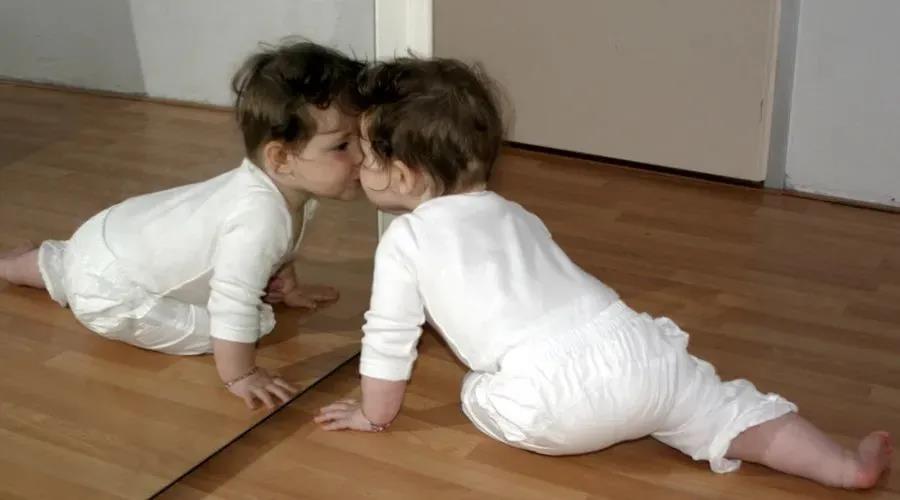
Of course it makes sense!
When the baby can find himself in the mirror, it means that he can distinguish himself from other people as different individuals, which means the emergence of self-awareness.
Just think about it, the results of this Amterstein’s study are consistent with children’s social development:
Children usually begin to develop their social behaviors quickly around the age of two, directly entering the parallel play period.
The development of self-awareness will enhance children’s self-understanding and social skills.
Only when children understand that they are different from others, can they distinguish between “you and me” and understand that other people’s feelings are different from their own, and only in this way can they understand that “what you think is not necessarily the same as what I think.”
Does it really take two years for children to develop self-awareness?
In fact, since Amsterdam announced the results of his experiment, many researchers have done more research on it.
Initial research found that children seem to be able to recognize themselves in the mirror at 18 to 24 months. Therefore, these researchers believe that the germination of self-awareness develops naturally with growth and does not require external intervention.
In fact, this view is not correct, because later studies have found that the family’s parenting style will affect the development of self-awareness!
In 2004, a study compared the effects of three family parenting styles on children’s self-awareness. The three parenting styles are:
Proximal parenting style. Parents who use this parenting style will have more skin contact with their children and pay more attention to the relationship between people.
Distal parenting style. Parents who use this parenting style will have more face-to-face communication with their children and pay more attention to their children’s independent ability.
Mixed parenting style, that is, the first two are mixed and used, which will help children to be independent and hope that children have better interpersonal relationships.
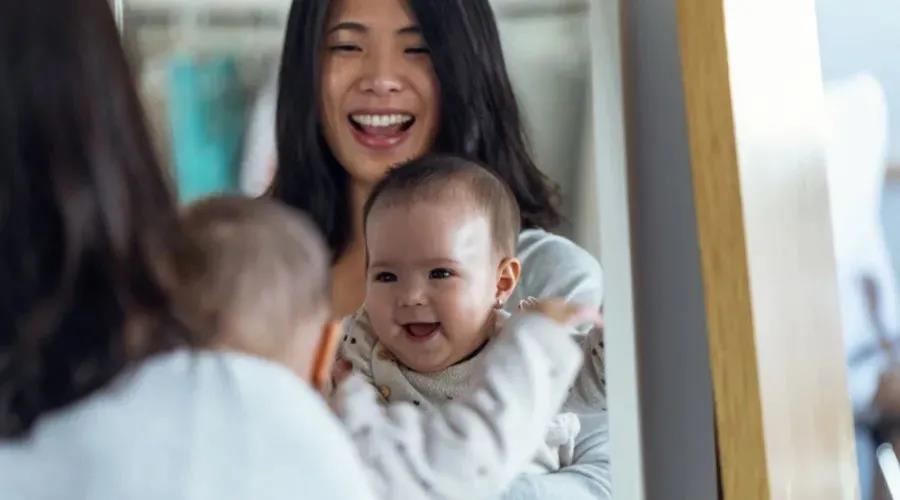
During the research, the researchers also used the rouge experiment. It was found that children who accepted the near-end parenting style had better self-mediation skills, but the children who accepted the far-end parenting style developed faster self-awareness.
A 2015 study found that some babies may pass the rouge experiment from 9 months of age!
These studies have confirmed time and time again that the development of children’s self-awareness follows certain laws. In 2003, Philippe Rochat divided the development of self-awareness into five stages:
Stage 1: The baby knows “there is a mirror”.
Unlike other animals, babies seem to have an innate ability to distinguish the image in the mirror from reflections rather than extensions of the surrounding environment since they are born.
This understanding is very important, because when the baby sees his own reflection, the baby can find that there is another baby in the mirror!
Stage 2: The baby knows that “there is a baby imitating me in the mirror”.
At this time, the baby not only finds that there is a baby in the mirror, but they also find that the baby in the mirror will also make the same action when they make any movements.
In other words, the baby will find at this stage that the baby in the mirror has a little relationship with him.
Stage 3: The baby knows that “the baby in the mirror is me!”.
At this time, babies no longer think that the baby in the mirror will look at themselves and imitate themselves. They know that the baby is themselves.
Stage 4: The baby knows “I will always be me”.
The baby at this stage not only knows that “the baby in the mirror is me”, but also knows that “the baby in the photo is also me.” In other words, even if the parents show the baby the photos of the baby wearing different clothes before, the baby knows that he is in the photo.
Stage 5: The baby recognizes “I am in the eyes of others”.
At this time, the baby can not only see the problem from his own perspective, but also from the perspective of other people.
Babies at this stage will be able to feel pride, shame, jealousy and sympathy, and will begin to restrict their behavior due to shyness. In other words, the baby’s mental theory at this stage has been expressed.
How to help babies develop self-awareness
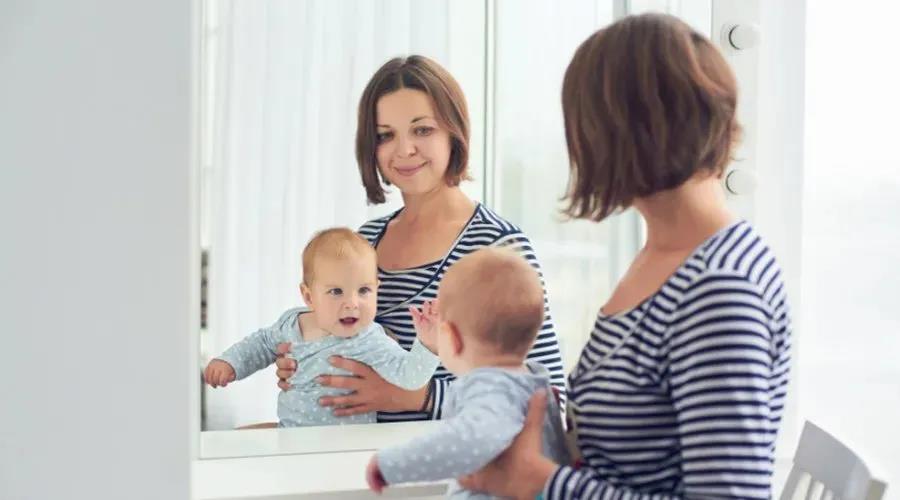
Since it was mentioned that researchers will use mirrors and photos to study children’s self-awareness, these are also tools to help babies understand themselves.
In life, parents can also do this:
1. Make funny expressions with your baby in front of the mirror
In fact, many dads may have made some weird and funny expressions in front of their babies. At this time, it is more effective to add a non-breakable mirror so that the baby can see the expression in the mirror.
Parents making exaggerated and funny expressions with their baby in front of the mirror or dancing to the music will not only make the baby feel funny and fun, but the baby will slowly discover that other people are different from themselves, and other people will also have their own feelings.
2. Scroll through previous photos
For older children, flipping through photo albums can not only promote children’s self-awareness, but also enhance children’s knowledge of family members’ faces.
At this time, parents can also point to those pictures with funny facial expressions and ask their children: “Do you think this person looks happy?”.
Using feeling-related words while pointing at the photo allows children to associate facial expressions with psychological feelings, which helps children recognize and express their feelings.
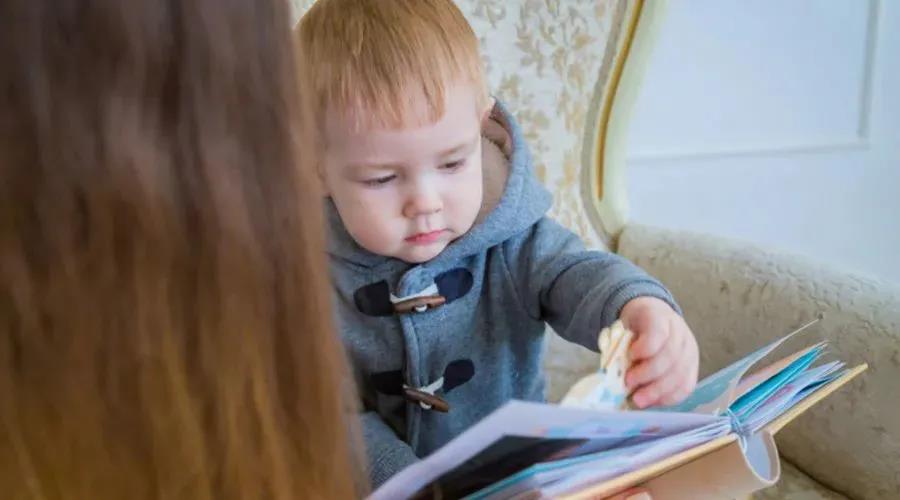
The development of self-awareness is a very complicated but very meaningful process. After all, this is closely related to social skills.
This is because only by first knowing yourself and understanding the difference between yourself and other people can you deal with other people and extend it to the outside world.
Comments